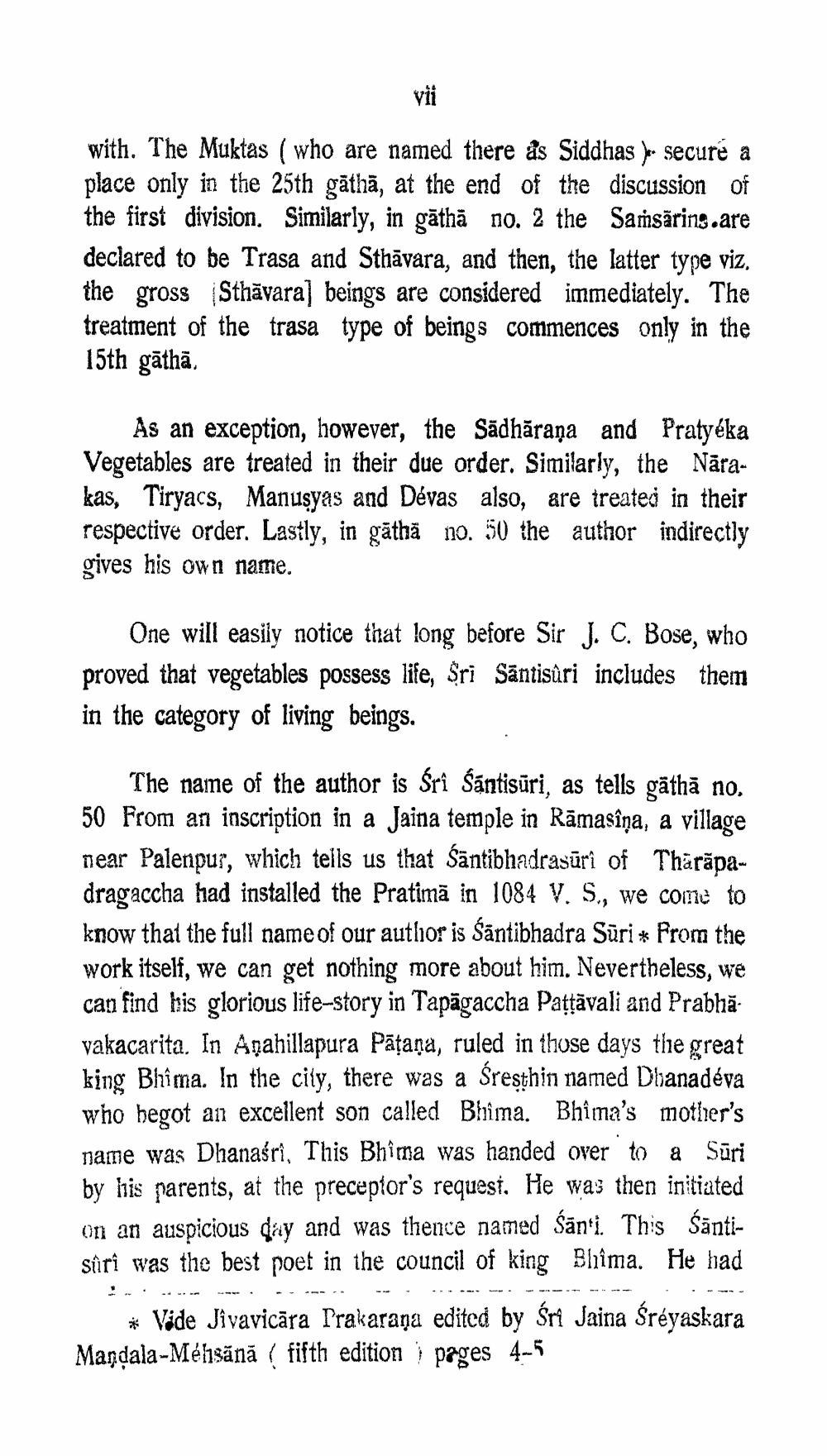________________
with. The Muktas ( who are named there as Siddhas to secure a place only in the 25th gãthā, at the end of the discussion of the first division. Similarly, in gāthā no. 2 the Saṁsäring.are declared to be Trasa and Sthāvara, and then, the latter type viz, the gross Sthāvara] beings are considered immediately. The treatment of the trasa type of beings commences only in the 15th gāthā.
As an exception, however, the Sãdhāraṇa and Pratyéka Vegetables are treated in their due order. Similarly, the Nārakas, Tiryacs, Manuşyas and Dévas also, are treated in their respective order. Lastly, in gāthā no. 50 the author indirectly gives his own name.
One will easily notice that long before Sir J. C. Bose, who proved that vegetables possess life, Sri Säntisůri includes them in the category of living beings.
The name of the author is Sri Sántisūri, as tells gathā no. 50 From an inscription in a Jaina temple in Rāmasîņa, a village near Palenpur, which tells us that Säntibhadrasūrî of Thārāpadragaccha had installed the Pratimā in 1084 V. S., we come to know that the full name of our author is Sántibhadra Sūri* from the work itself, we can get nothing more about him. Nevertheless, we can find his glorious life-story in Tapāgaccha Pattāvali and Prabhāvakacarita. In Anahillapura Pāțaņa, ruled in those days the great king Bhima. In the city, there was a Śresthin named Dhanadeva who hegot an excellent son called Bliima. Bhima's mother's name was Dhanasri, This Bhima was handed over to a Sūri by his parents, at the preceptor's request. He was then initiated on an auspicious day and was thence named śānti. This śāntisûri was the best poet in the council of king Blima. He had
* Vide Jîvavicāra Irakarana edited by Śri Jaina Śréyaskara Mandala-Méhsānā (fifth edition pages 4-5




